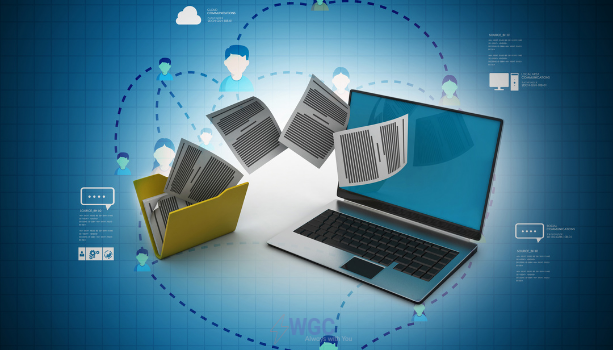In the digital age, data transmission lies at the heart of the internet, enabling seamless communication and information exchange across the globe. But have you ever wondered how data travels from one point to another in the vast expanse of cyberspace?
Let’s delve into the mechanisms that underpin this essential process and explore the different methods through which data is transmitted on the internet.
Understanding Data Transmission:
Data transmission refers to the process of sending and receiving data between two or more devices over a network. Whether you’re streaming a video, sending an email, or browsing a website, every online activity involves the transmission of data packets across the internet.
Key Components of Data Transmission:
- Sender: The device or system that initiates the transmission of data.
- Receiver: The device or system that receives the transmitted data.
- Medium: The physical or virtual pathway through which data travels, such as cables, wireless signals, or optical fibers.
- Protocol: A set of rules and conventions that govern the formatting, transmission, and reception of data packets.
Methods of Data Transmission:
- Wired Transmission:
- Description: Wired transmission involves the use of physical cables or wires to transmit data between devices. Examples include Ethernet cables, coaxial cables, and fiber-optic cables.
- Pros:
- Relatively stable and secure.
- Higher data transfer speeds compared to wireless transmission.
- Cons:
- Limited mobility due to physical constraints.
- Susceptible to damage or interference.
- Wireless Transmission:
- Description: Wireless transmission relies on electromagnetic waves to transmit data over the airwaves. Common wireless technologies include Wi-Fi, Bluetooth, and cellular networks.
- Pros:
- Greater mobility and flexibility.
- No need for physical cables, allowing for easier setup and installation.
- Cons:
- Signal interference and degradation over long distances or in crowded environments.
- Lower data transfer speeds compared to wired transmission in some cases.
Comparison of Wired vs. Wireless Transmission:
| Aspect | Wired Transmission | Wireless Transmission |
|---|---|---|
| Data Transfer Speed | Generally higher | Lower compared to wired transmission in some cases |
| Mobility | Limited mobility due to physical cables | Greater mobility and flexibility |
| Installation | Requires physical cables, potentially complex setup | Easier setup and installation without cables |
| Interference | Less susceptible to signal interference | Signal interference possible, especially in crowded environments |
| Security | Generally more secure | Vulnerable to eavesdropping and signal interception |
Data transmission on the internet encompasses a diverse array of technologies and methodologies, each with its own strengths and limitations. Whether through wired or wireless means, the efficient transmission of data is essential for the seamless functioning of the digital world.
By understanding the mechanisms and considerations involved in data transmission, we can better appreciate the intricate workings of the internet and harness its potential for communication, collaboration, and innovation.





